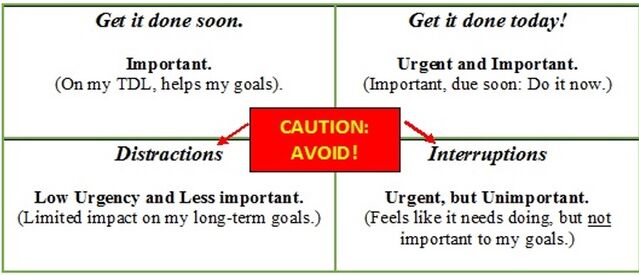Stress
Flatten the Curve
Manage your time and energy so as not to overwhelm your mind-body system.
Posted December 23, 2020

We hear this term during the pandemic – it refers to lowering community infection rates to reduce the strain on medical care. Flattening the infection curve lets the medical system extend resources. Peaks in demand over-exert any system, eventually resulting in rationing, or even a total shutdown. It makes sense to “flatten the curve” to avoid stressful peaks with any system: from medical care, to electric grids, or economics.
Our human system is no different. The more you stress your body-mind system, the more likely you are to succumb to negative moods, periods of low energy, or a mental meltdown (aka: “burnout”).
Have you experienced this pattern of extending maximum effort during times of high demand, followed by your energy or mood crashing? You worked too long and hard, only to experience fall-out fatigue and a need to shut down? Bouts of high work output are normal for productive people, but if repeated sessions of high stress are followed by an energy crash, this is not healthy.
A yo-yo pattern of extreme ups and downs is more stressful and less productive in the long run than maintaining a steady energy flow. Are you convinced you do your best work under pressure? How is that up-and-down pattern working for you? Take an honest look at your pattern of work-life balance, and how you manage life’s demands and stress.
Managing your energy wisely – with the optimal concentration, attention, and motivation – means you must recognize your patterns and garner your reserves to prepare for periods of peak demand. Intentionally plan downtime to allow your mind-body system sufficient maintenance and recovery. Try to flatten your own energy curve, as shown in the figure. Instead of cramming for deadlines, anticipate upcoming peaks in demand, and manage your time and energy. There are ways to achieve your goals without overdoing it.
A key step is to become more aware of getting drawn into a yo-yo pattern of high effort followed by valleys of low energy. Do you drain your batteries to “zero,” going beyond your limits before you finally have to recharge? Here are some tips:
- Pre-position resources – Anticipate and prepare before upcoming peaks of stress or demand. Rested, healthy, and restored, you start out from a more positive baseline, and will be more resilient at times of peak demand. Start strong so the stress won’t wear you down!
- Generate optimum performance – When the time arrives to perform, give it your all. They say “Leave it all on the field.” Now is the moment to find your optimum “zone” of arousal and energy to achieve your full potential and maximum results. Game on!
- Recognize your lows – We all experience low-energy troughs – but repeated valleys signal that you may be over-exerting yourself. Take honest note of how often you tax yourself to the point of exhaustion. If this happens more than occasionally, it’s a red flag.
- Manage energy to minimize the lows – Even short periods of rest, diversion, or exercise are amazing restorative gifts to yourself. Brief breaks for movement, healthy snacking, or other activities might be the best medicine. Nothing beats a day off or a good night’s sleep. However, when that can’t be arranged, restore yourself with brief and pleasurable timeouts.
Even the most productive people take a break sometimes. After all, Aesop’s slow and steady tortoise won the race against a speedier hare. If slow and steady is not always possible in our deadline-driven world, remember that you can take control of your work-life balance by managing your time and energy. It’s best to: “Respect yourself, so you don’t wreck yourself.”
There are many electronic apps geared toward improving mental health, reviewed in previous posts (see: "My Apps Are Questioning My Mood"). Here is a recent listing of some of the most downloaded mental health apps.
Yet not every solution is found on a smart device, and sometimes the best “apps” are the mental hacks you can launch anytime to really make a difference!
App “Prioritize”
Recognize the difference between a truly important task (vital to your goals) and one that just feels urgent. Some tasks appear urgent and seem to require immediate attention, but are not critical to your own goals. Beware: Other people love to make their agendas your most urgent tasks! Sort your to-do list by distinguishing the truly important from seemingly urgent tasks. Here is the so-called Eisenhower Matrix that presents this idea for prioritizing:

It’s often said: “Don’t sweat the small stuff.” This is a cliché that happens to be true. Avoid “administrivia” – tasks that are less important yet drain your precious time and energy.
Look for these and other mental “Apps” in future blogs, and in my book, Password for Your Mind.
App Time Management – Break big projects into smaller steps. Reward yourself to get it done!
App Chill – Try peaceful visualization and deep breathing for as-needed de-stressing breaks.
App Energy Circle – Map your days. How do you use your time?
App Goal Setting – If you don’t know where you're going… it’s harder to get there.
App PAS: Positive Asset Search – Count your blessings. Think of who or what you're grateful for because this helps you offset the blues at challenging times.
Health Apps – Remind us to move around more, exercise; prepare and eat healthy foods.
As they say, “If you find yourself on a vicious cycle… stop pedaling!”




